Music -- Traditional Chinese Instruments
China's music goes back a long way, farther back than you can imagine. Along with the music are naturally a bunch of the most wonderful musical inventions: traditional Chinese Instruments. Take a look and explore them!
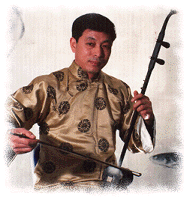
|
BOWED STRING INSTRUMENTS
Erhu
The Erhu has a small body and a long neck. There are two strings, with the bow inserted between them. With a range of around three octaves, it's sound is rather like the violin, but with a thinner tone due to the smaller resonating chamber. In the orchestra they are usually divided into 1st and 2nd parts.
Banhu
This instrument is a variety of the huqin. This is so because it uses a wooden sounding board in the sound box. Also known as the bonghu (clapper huqin) because it was heard in the Bangzi or "clapper operas" of the 17th century.
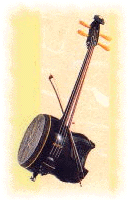
|
These are common doubles for Erhu players. The Gaohu is higher-pitched, while the Zhonghu is the alto version. The Zhonghu has a beautiful tone, similar to the cello.
Gehu
This is a mixture of the cello and the hu, using four strings, and similar playing technique. As the instrument uses a banjo-like membrane as the sounding board, the resulting sound is unlike the cello, however.
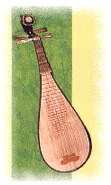
|
Very similar in technique and usage as the double bass, with a different sound due to the variance in construction.
PLUCKED STRING INSTRUMENTS
Pipa
The Pipa, also the Lute, resembles the Spanish guitar in some ways, with long finger-nails being cultivated to pluck the strings. With its characteristic pear shape and four gut strings,

|
Guqin
The Guqin, a seven-stringed zither, is the oldest Chinese string instrument with 3000 years of history. In Imperial China, a well-educated scholar was expected to be skilled in four arts: qin, qi, shu, and hua; in other words, the guqin, chess, calligraphy, and painting . Since the Guqin has historically been viewed as the symbol of Chinese high culture, today only less than three hundred people in China can play it. It is a rarity today.
Liuqin
This looks like a smaller version of the pipa and sounds like a mandolin.
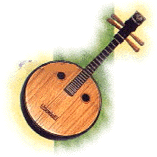
|
Also known as the moon guitar, it comes in a variety of different sizes and pitches, and is fitted with four strings.
Yangqin
Coming in a variety of sizes, the Yangqin is a dulcimer played with bamboo mallets. The metallic tone resembles the harpsichord, and the concert model has four octaves.
Guzheng
Also known as the Zheng, this is the Chinese zither. Sizes vary fron 13 to 17 strings and has a range exceeding three octaves tuned to the pentatonic scale.
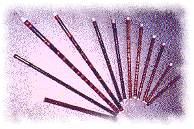
|
Di
The Di, or Di-tz, is the traditional Chinese flute. As only three keys can be played accurately on traditional instruments, most players carry a chromatic set. It can have a membrane over an extra tone hole to give the characteristic rattle effect, although some compositions call for this to be omitted.

|
This beautiful instrument will occasionally appear in orchestral wind sections. It is a flute-like pipe with a free reed in the mouth piece.
Suona
This is a reed instrument with a conical metal bell. It has a nasal penetrating sound and comes in various sizes.
Sheng
This is one of the oldest varieties of Chinese instruments, and consista of a bundle of between 17 to 36 pipes seated on a small wind chamber. A free brass reed is placed in the root of the instrument. Coming in soprano, alto, and tenor models, they have a great clarity of tone, and compensate for the lack of brass in tutti orchestration.
Guan
This is a cylinder fitted with a reed mouthpiece. It has a nasal sound quality and generally comes in a variety of sizes.
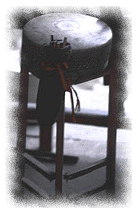
|
Gongs and Drums
Like many other oriental musical ensembles, the classic Chinese orchestra uses a wide variety of percussion. Some examples are the Paigu, which is a set of seven, small, tuned drums, together with drums of all pitches and sizes. Used are the yunlo (tuned gongs), quings (tuned bronze bowls), and the jingluo, a small gong used in Beijing opera. This last is recognisable for its characteristic rising tone. Also used are cymbals, gongs, bells and hand bells, wooden bells and hand clappers, claves and temple blocks.
Sound Clips
 |
Erhu clip: an un-sharp violin. Erhu song: "Empty Mountain Birds Singing" |
 |
Pipa clip: the Lute, like a Spanish guitar. |
 |
Di ' tz clip: the flute is a longer type, making a lower sound. Di ' tz clip: a short Di ' tz, a higher sound. Di ' tz mood: chirping birds. |



 Chinese Culture
Chinese Culture